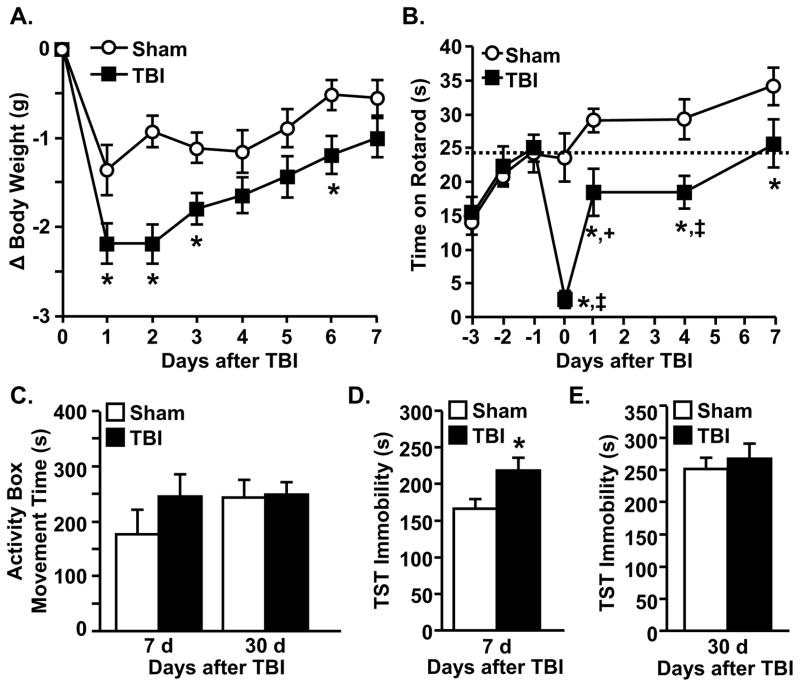Figure 2. Diffuse TBI promotes transient deficits in body mass, motor coordination, and depressive-like behavior.
TBI caused A) reduced body weight 1–3 and 6 dpi (F(1,44)=3.41, p<0.004), but body weight recovered to sham levels by 7 dpi (n=22). B) Motor coordination was reduced by TBI (F(1,111)=23.46, p<0.0001) in a time manner (F(6,111)=5.40, p<0.0001) (n=8). The dashed, horizontal line indicates baseline motor function. C) Total movement time in the activity box did not differ between groups at either 7 or 30 dpi (n=7). D) TBI mice had increased immobility in the TST compared to sham mice 7 dpi (F(1,13)=5.4, p<0.04) (n=7). E) There was no significant difference in immobility in the TST at 30 dpi (n=16). Bars represent the mean ± SEM. Means with (*) are significantly different (p<0.05) from sham controls. Means with (‡) and (+) are significantly different (p<0.01) and tend to be different (p=0.09) from baseline levels, respectively.

